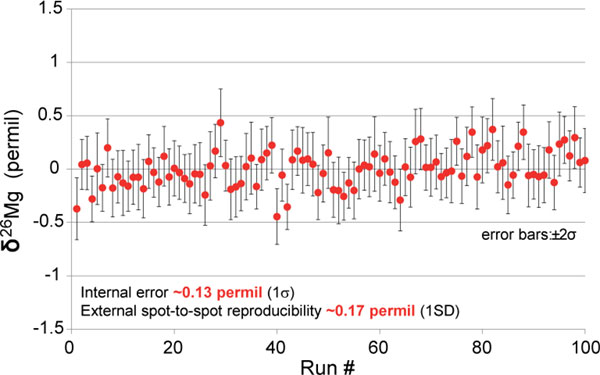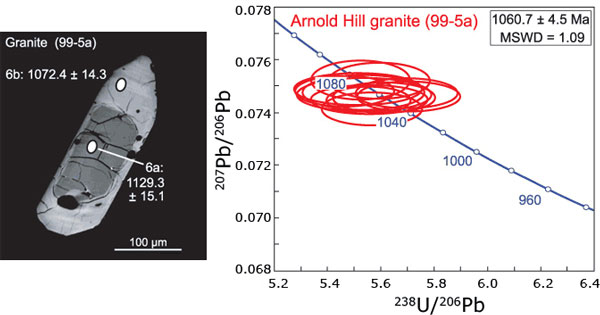CAMECA IMS 1300-HR³
Large Geometry SIMS for Geosciences
The CAMECA IMS 1300-HR³ is a large geometry ion microprobe for a wide range of geoscience applications:
- Track geological processes using stable isotopes
- Date minerals (geochronology)
- Trace element detection / distribution
- Nuclear safeguarding: locate and measure uranium particles
HR³ stands for:
- High Reproducibility
- High spatial Resolution
- High mass Resolution
This combination is ideal for small scale, high precision, in-situ isotopic measurements.
Contact us for more information and quotes:
+44 (0)1223 422 269 or info@blue-scientific.com


Example Applications
If your area of interest isn’t mentioned here, please get in touch.
Stable Isotopes: Carbon
Map minerals and detect even minor variations in isotopic ratios, such as this diamond.
Comparing the CL image and carbon isotope map suggests that the δ13C values of natural diamonds are directly related to the δ13C composition of the mantle fluid reservoir where they grow.
Geochronology
Perform in-situ dating with high precision. The IMS 1300-HR³ has outstanding ion image capability for Pb and U mapping in zircon grains (inhomogeneity, zonation).
This example shows U-Pb direct dating of iron oxide-copper-gold (IOCG) mineralisation, on hydrothermal zircon crystals from IOCG-type ore deposits.
Both young and old zircon can be dated with large geometry SIMS, as well as monazite, apatite, titanite, rutile and baddeleyite for a whole range of geochronological applications.
Courtesy of P.M. Valley et al., Geology 37 (2009), p.223.
Nuclear Safeguarding
High precision Uranium isotopic analysis on nuclear particles. SIMS is the only analytical technique that can perform in situ elemental and isotopic analysis with sub-µm spatial resolution and high sensitivity. Results can be obtained from a specimen as small as a few picograms.
This example is from a sample containing standard µm-sized U particles with dual isotopic composition.
Data from: P. Peres et al, Surface and Interface Analysis 45-1, 561-565 (2013)
Technical Details
The CAMECA IMS 1300-HR³ is the successor of the previous generation IMS 1280-HR.
Key features from the IMS 1280-HR:
- Large geometry design for optimum sensitivity at high mass resolution
- High precision isotope measurements with a versatile multi-collector system
- Dual primary ion sources for positive & negative secondary ions
- Superior ion imaging capabilities (microprobe and microscope modes)
- Enhanced magnet control system for reproducibility
- Remote operation and automation
New Features
- New RF-plasma oxygen source
- Enhanced beam density and current stability
- Significantly higher spatial resolution
- Improved data reproducibility
- Higher throughput
- Motorised storage chamber with automated sample height (Z) adjustment
- Greater analysis precision
- Easier to use
- Better productivity
- UV light microscope
- Improved optical image resolution
- Dedicated software for navigating samples easily
- Low noise electrometry system for measuring low counting rates, with 1012 Ω resistor Faraday cup boards
Application Notes
These application notes are available to download from CAMECA:




